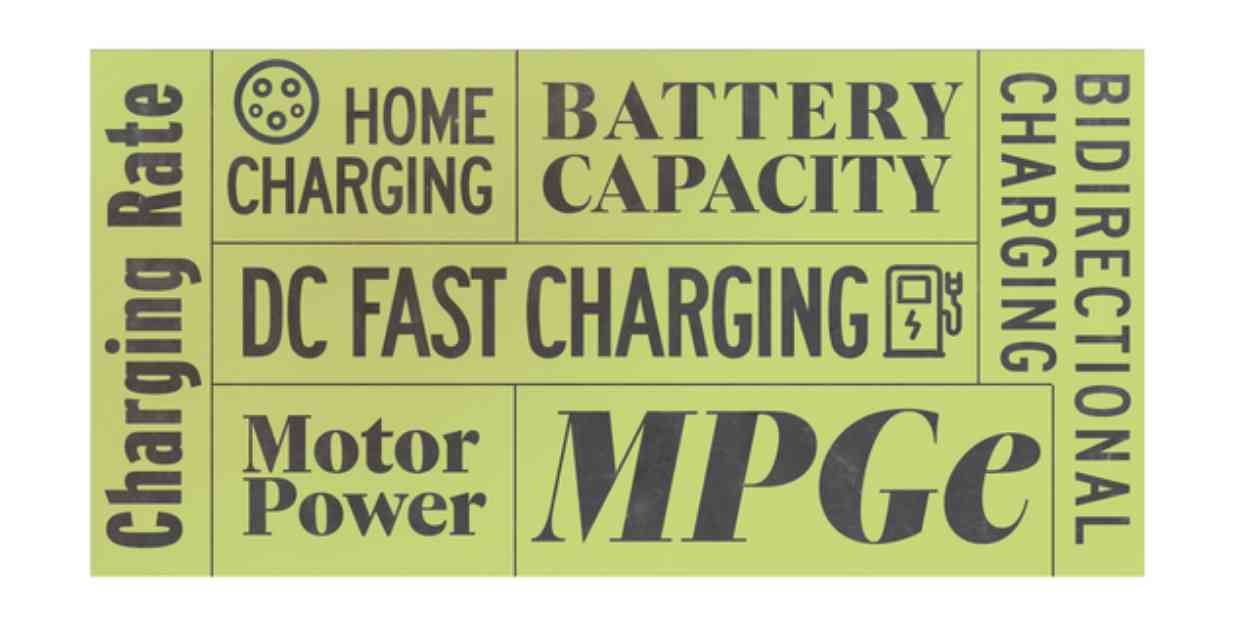Electric motors are now challenging the traditional internal combustion engines that have been used to power cars and trucks for over a century. With the rise of modern electric vehicles and their advanced technologies, a new set of terms and measurements have become commonplace in the automotive world. From MPGe (Miles Per Gallon Equivalent) to V2L (vehicle to load) and kWh (kilowatt hour), understanding these terms is essential for anyone looking to delve into the world of electric cars.
Let’s break down these seven key EV tech terms to help you navigate the basics of these innovative battery-powered vehicles:
Motor Power:
In North America, electric motor power is often measured in horsepower or kilowatts. One kilowatt is equivalent to 1.34 horsepower, so if you see an EV motor rated in kW, simply add one-third to that number to get an estimate of the horsepower it produces. It’s important to note that the total power of an EV with multiple electric motors may not necessarily be the sum of each motor’s power output.
Battery Capacity:
The energy stored in an electric vehicle’s battery is measured in kilowatt-hours (kWh). This unit is similar to what utility providers use to bill you for your home’s electricity usage. Smaller EVs with around 200 miles of range typically have batteries around 60 kWh, which can provide power for a certain number of hours. Understanding usable capacity versus total capacity is crucial, as it affects the actual power output of the battery.
Home Charging:
The majority of electric vehicle charging currently takes place at home or work. There are two levels of home charging – Level 1 and Level 2 – which differ in power output and charging speed. Installing dedicated Level 2 charging equipment is recommended for daily commutes exceeding 30-40 miles. Public charging stations mainly offer Level 2 charging for on-the-go charging needs.
DC Fast Charging:
For long-distance travel, DC fast charging stations provide the quickest charging option for EVs. These stations are typically found at highway rest stops and can charge an EV’s battery significantly faster than Level 1 or Level 2 chargers. It’s important to note that the charging rate slows down as the battery reaches full capacity.
Charging Rate:
The rate at which an EV can recharge is measured in kilowatts, with AC charging (Level 1 and Level 2) ranging from 1.0 to 19.2 kW. DC fast charging rates can go up to 350 kW, depending on the car’s capabilities and the charging station. Understanding your EV’s charging rate is crucial for efficient charging.
MPGe:
Miles Per Gallon Equivalent (MPGe) is a measure of an EV’s efficiency compared to a gasoline-powered vehicle. While the EPA uses MPGe for comparison, range and energy consumption are more relevant for EV drivers in real-world scenarios.
Bidirectional Charging:
Bidirectional charging, also known as V2L (vehicle to load), allows EVs to export electricity from their batteries. This feature can be used to power external devices or even homes in case of emergencies. Some EVs can function as generators to provide electricity during blackouts or in remote locations.
Understanding these key EV tech terms is essential for anyone looking to transition to electric vehicles. As the automotive industry continues to evolve towards sustainable and eco-friendly solutions, mastering these terms will help you navigate the world of electric cars with ease.










